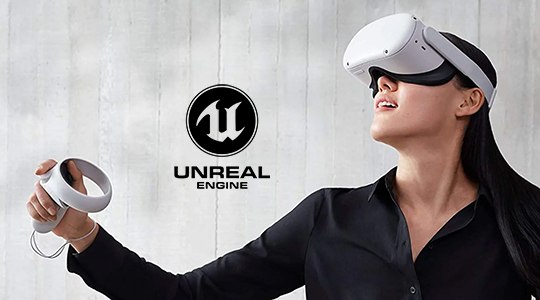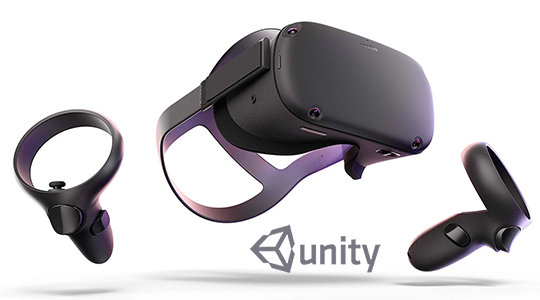Virtual reality (VR), a technological marvel, offers immersive experiences that transport users into different realms. It amalgamates sensory engagement and interactive design to create compelling virtual environments. Meta Quest, a product pioneered in this revolutionary field, is a standalone VR headset.
Promising unparalleled immersion, the Meta Quest harnesses the power of VR, allowing users to step into alternate realities without the need for an external computer or console. Its innovative design and powerful features make it a gateway to a myriad of virtual experiences – from gaming and education to social interactions.
This device is a testament to the advancing strides in VR technology, demonstrating the potential of a VR app development company to reinvent our relationship with the digital dimension. In this article, we'll unravel the features, potential, and implications of the Meta Quest, paving the way for a broader understanding of this groundbreaking VR device.
What Is the Meta Quest?
The inception and evolution of the Meta Quest, formerly known as Oculus Quest before the rebranding of Meta Platforms Inc., is a captivating journey that underscores the rapid advancements in the realm of virtual reality. The Meta Quest's story is interwoven with the rise of Oculus VR, a company instrumental in pushing the boundaries of VR technology.
Oculus VR was established in 2012 and spearheaded by the enterprising Palmer Luckey. The company, starting with a successful Kickstarter campaign that captivated tech enthusiasts worldwide, embarked on the creation of Oculus Rift. This headset played a crucial role in ushering in the contemporary era of VR.
In a landmark development, Facebook (now Meta Platforms Inc.) acquired Oculus in 2014, marking a significant turning point in the company's trajectory. With Facebook's vast resources and a shared vision for a more connected and immersive digital world, Oculus was poised to break new ground in VR technology.
This partnership bore fruit in 2018 with the launch of Oculus Go, the first standalone VR headset that didn't require a tethered PC or console. Despite being a pioneering device, the Oculus Go had its shortcomings. The lack of positional tracking and limited controller functionality meant that while it was a step forward in accessibility, it couldn't deliver the depth of immersion VR was truly capable of.
However, these challenges served as vital learning opportunities for the company, guiding the development of the next-generation VR headset. Launched in 2019, the Meta Quest, as it's now known, represented a significant leap forward in VR technology. This device offered a far more immersive VR experience, featuring six degrees of freedom (6DoF) positional tracking and intuitive hand controls. These enhancements meant users could move and interact within the virtual space as they would in the real world, vastly expanding the range of possible experiences.
Detailed Overview of Meta Quest Capability
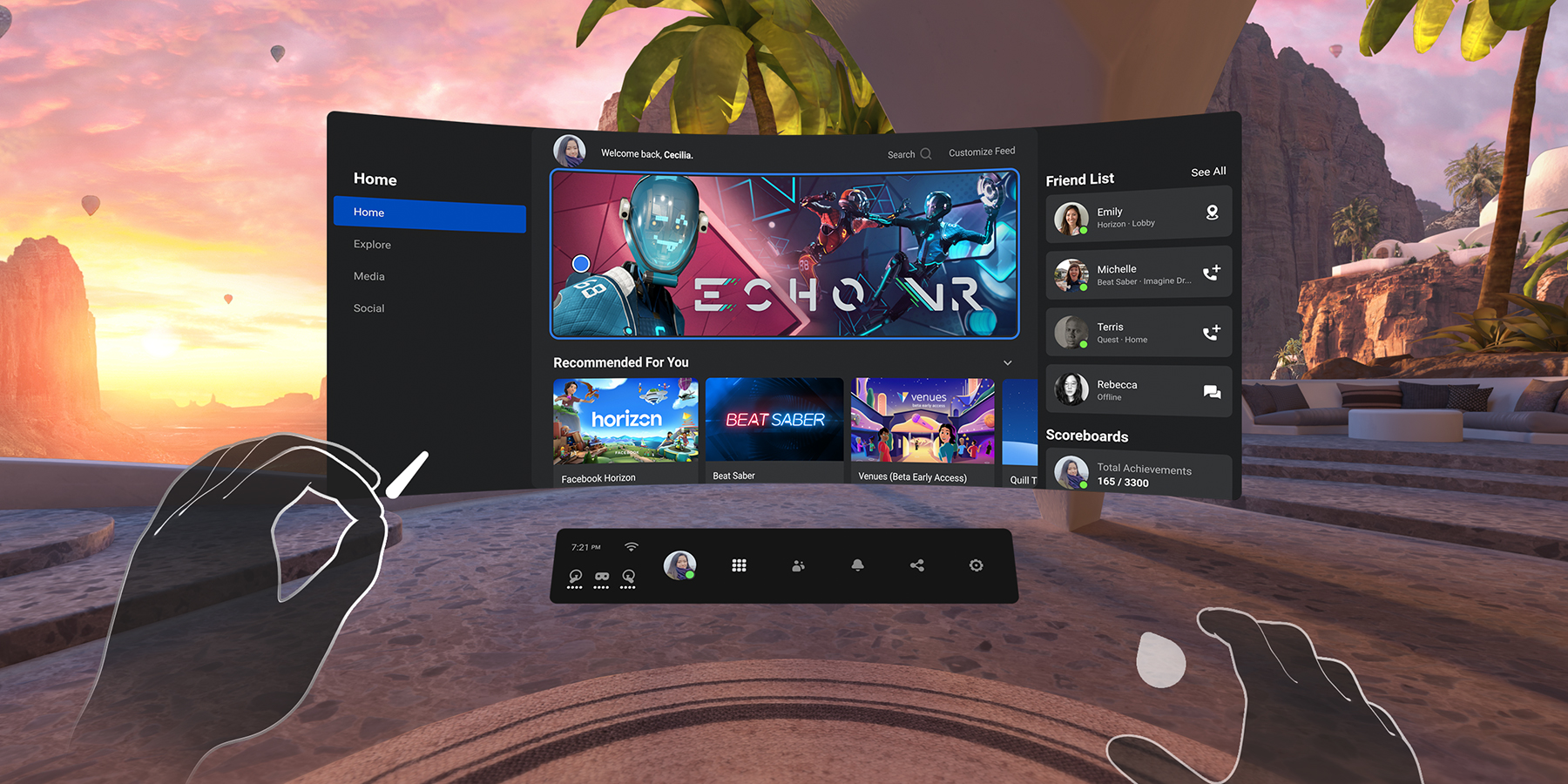
The Meta Quest series delivers immersive VR experiences by incorporating advanced display technology, the aforementioned 6DoF positional tracking, and intuitive hand controls. These capabilities ensure high-resolution visuals, freedom of movement, and realistic interactions within virtual spaces.
How Does Meta Quest Work?
The Meta Quest, an all-in-one VR headset, operates without the need for an external computer or console. Equipped with 6DoF, the headset allows users to move naturally in virtual spaces, mirroring real-world actions. Its custom optics provide a wide field of view, enhancing immersion with high-resolution graphics. The device's position is tracked using four ultra-wide-angle sensors, which capture real-time inputs from the environment.
The Quest controllers, ergonomically designed for comfort, translate physical hand movements into the virtual world, making the virtual experiences more engaging. By integrating audio into the headset, users are enveloped in positional sound, intensifying the sense of presence in VR.
How Does Meta Quest 2 Work?
Meta Quest 2 takes the potential of VR technology to a new level. While it shares its predecessor's standalone design, it offers significant upgrades in performance and display quality. The Quest 2 utilizes the powerful Snapdragon XR2 platform for enhanced processing power, improving VR performance and the capacity to handle demanding apps and games.
Additionally, the Quest 2 features a higher resolution per eye compared to the first Quest, providing sharper visuals for a more immersive VR experience. It also includes an option for a higher refresh rate, allowing for smoother, more realistic motion in virtual environments. The advanced hand-tracking system has been further refined for more precise and natural interactions.
Main Requirements for Meta Quest Usage
Using Meta Quest or Quest 2 is a fairly straightforward process, but there are a few requirements and recommendations to consider. Firstly, you need a valid Facebook account to use the Quest series as part of Meta's ecosystem integration. It's also recommended to have a high-speed internet connection for downloading games and apps, software updates, and accessing online multiplayer features.
While the Quest series is standalone, a compatible USB 3.0 cable and a high-performance PC may be needed if you want to access PC VR games using the Oculus Link feature. The PC should meet the Oculus Link System Requirements, including a compatible graphics card and processor.
For the best VR experience, users should have a clear play area. The Quest series uses the Guardian System that lets you establish boundaries in your play space to prevent bumping into physical obstacles.
Finally, for health and safety, it's advisable for users to take regular breaks to prevent VR fatigue and ensure that the user is above the recommended age limit, which is 13 years old.
The Main Meta Quest Versions Currently Available
The Meta Quest series, previously known as the Oculus Quest series, offers two versions: the original Meta Quest, launched in 2019, and the Meta Quest 2, launched in 2020. Both versions have revolutionized the VR industry by providing high-quality, standalone virtual reality experiences.
The original Meta Quest was the first of its kind to offer a standalone VR experience with 6DoF (six degrees of freedom), allowing for natural and intuitive interactions within the virtual environment. A Qualcomm Snapdragon 835 processor powers this first-generation device and offers a resolution of 1440 x 1600 pixels per eye. Two variants are available based on storage capacity: 64GB and 128GB.
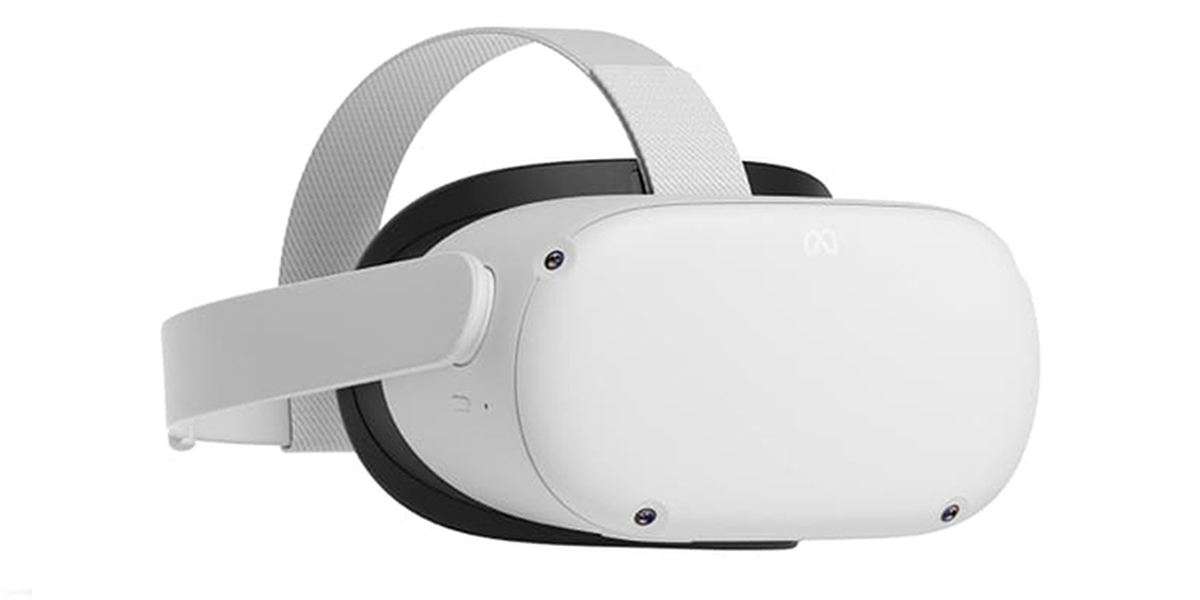
In 2020, the Meta Quest 2 was introduced, building upon the foundations of its predecessor with enhanced capabilities. It operates on the more powerful Qualcomm Snapdragon XR2 platform, offering increased performance and graphics rendering capabilities. One of the major upgrades includes a higher resolution, with 1832 x 1920 pixels per eye, providing sharper, more immersive visuals. In terms of storage, the Quest 2 is available in two versions: 64GB and 256GB, providing ample space for a wide range of applications, games, and media.
Furthermore, the Quest 2 showcases a refreshed design that is more comfortable and lighter than the original Quest, enhancing the user's VR experience. The controllers for Quest 2 were also refined for better ergonomics and battery life. Despite these improvements, Quest 2 maintained the standalone nature of the original, preserving the freedom and accessibility that make the Quest series appealing.
Meta Quest Pro: Your Bridge to Experiencing Mixed Reailty (MR)
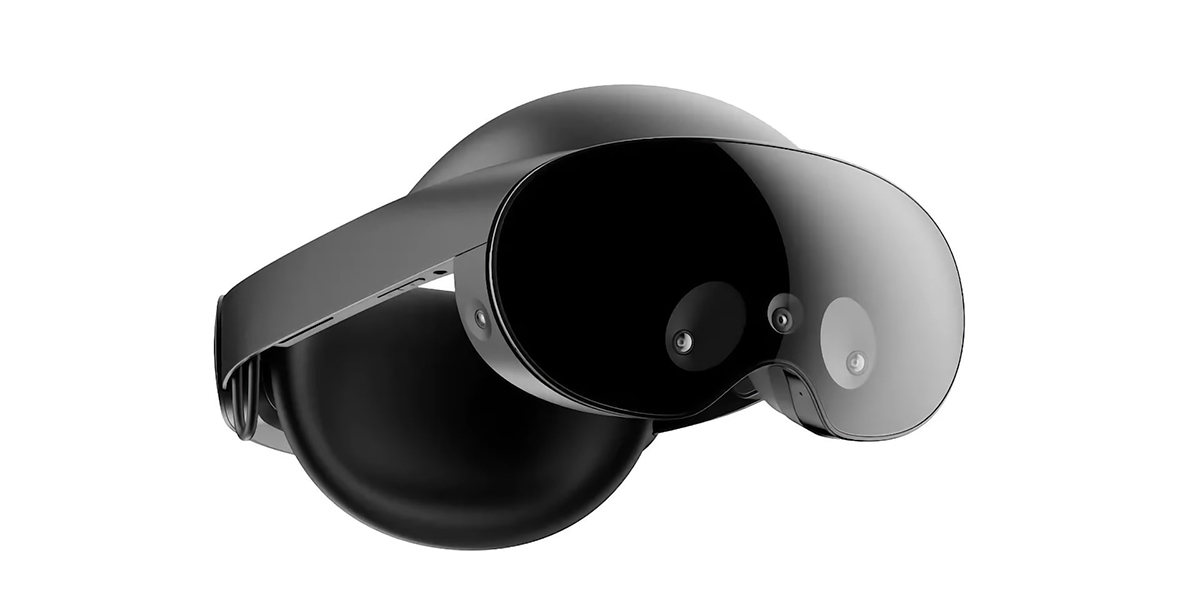
Recently released Meta Quest Pro has become a new iteration of VR headsets in the Quest product line. Positioned as a mixed reality headset, it has introduced several upgrades to previous Meta Quest models, like a cutting-edge holographic display that provides immersive, high-definition experiences or enhanced graphical processing capabilities.
The Meta Quest Pro's breakthrough lies in its predictive AI algorithms, a considerable upgrade from the Quest 2's tracking system. These algorithms accurately interpret the user's physical context, merging virtual and real objects more naturally, fostering a more intuitive and lifelike MR experience.
Possessing an extended battery life, the Pro allows for prolonged immersion into your digital endeavors, offering convenience to gamers, professionals, and tech enthusiasts alike. Coupled with an advanced ergonomic design, the Pro ensures comfortable extended use.
Though the device received mixed reviews, it has introduced innovative features of VR headsets and gives us a vision of what we can expect from the next Meta Quest model, announced to be released soon.
Meta Quest Specifications
The original Meta Quest is powered by the Qualcomm Snapdragon 835 processor, which efficiently handles various VR applications. It boasts a resolution of 1440 x 1600 pixels per eye, enhancing visual immersion. The OLED display panel ensures vivid and contrast-rich visuals. It also features 4GB RAM and comes in two versions based on storage space: 64GB and 128GB. The integrated audio system and the microphone enable spatial sound and communication, while the rechargeable battery allows for approximately 2-3 hours of usage.
On the other hand, the Meta Quest 2 comes with a significant performance boost, courtesy of the Qualcomm Snapdragon XR2 platform. The XR2 enables advanced AI algorithms, improved graphics, and better multitasking than its predecessor. The resolution is increased to 1832 x 1920 pixels per eye, providing an even more immersive VR experience with a single fast-switch LCD panel. Additionally, it features 6GB RAM and comes in 64GB and 256GB storage versions.
The Quest 2 also provides a refresh rate of 90 Hz, an improvement from the original Quest's 72 Hz, making motion in the virtual environment smoother and more lifelike. The controllers are redesigned for better ergonomics and extended battery life. In terms of audio, it continues to offer integrated positional audio and a built-in microphone.
Both the Quest and Quest 2 feature four ultra-wide-angle sensors for positional tracking, supporting 6DoF movement, and they also have a built-in IPD (interpupillary distance) adjustment mechanism for optimal lens positioning. Despite their robust specs, both versions remain standalone devices, offering a tetherless VR experience while still providing the option to connect to a VR-ready PC via an Oculus Link cable for expanded functionality.
| Specification | Meta Quest | Meta Quest 2 |
| Processor | Qualcomm Snapdragon 835 | Qualcomm Snapdragon XR2 |
| Display Type | Dual OLED | Single Fast-Switch LCD |
| Resolution per Eye | 1440 x 1600 pixels | 1832 x 1920 pixels |
| Refresh Rate | 72 Hz | Up to 90 Hz |
| RAM | 4 GB | 6 GB |
| Storage Options | 64GB, 128GB | 64GB, 256GB |
| Tracking | 6DoF (Six Degrees of Freedom) | 6DoF (Six Degrees of Freedom) |
| Controllers | Oculus Touch Controllers | New Oculus Touch Controllers |
| Audio | Integrated audio, microphone | Integrated audio, microphone |
| Battery Life | Approx. 2-3 hours | Approx. 2-3 hours |
| IPD Adjustment | Yes | Yes |
| PC Tethering Option | Yes (Oculus Link cable) | Yes (Oculus Link cable) |
Meta Quest 2: Full Review
The Meta Quest 2, formerly known as the Oculus Quest 2, has cemented its position as a significant leap forward in the evolution of VR headsets since its launch. This second-generation device takes the standalone nature of the original Quest. It enhances it with notable improvements in performance, resolution, and design, delivering a truly immersive and intuitive VR experience.
Firstly, the Quest 2's processing power has been significantly boosted with the Qualcomm Snapdragon XR2 platform. This enhancement results in smoother gameplay, faster load times, and improved AI capabilities, making VR experiences more responsive and engaging.
Secondly, one of the biggest advancements is the display. The Quest 2 offers a resolution of 1832 x 1920 pixels per eye, a noticeable improvement over the original Quest. This improved resolution translates into sharper, clearer visuals that greatly enhance immersion. Furthermore, with the device's 90Hz refresh rate, movements and transitions in VR appear smoother and more lifelike.
The Quest 2's design has also been refined. It is lighter and more comfortable than its predecessor, with an adjustable head strap and redesigned controllers that offer a better ergonomic fit. This improved comfort is a significant advantage for longer VR sessions.
In terms of audio, the Quest 2 maintains integrated positional audio, delivering high-quality sound that moves with the user's head orientation, enhancing the sense of immersion. It also provides a built-in microphone for social interactions within the VR space.
The Quest 2 comes in two storage variants, 64GB and 256GB, accommodating a wide array of games, applications, and multimedia content.
Overall, our experience with the Meta Quest 2 shows that it is a refined and improved VR headset that delivers a truly immersive and high-quality VR experience. It hits the sweet spot of balancing performance, quality, and price, making it a valuable choice for both newcomers and seasoned VR enthusiasts. Whether for gaming, educational applications, or social VR, Quest 2 stands as a strong testament to the potential of VR technology.
Comparing Meta Quest to Other VR Headsets
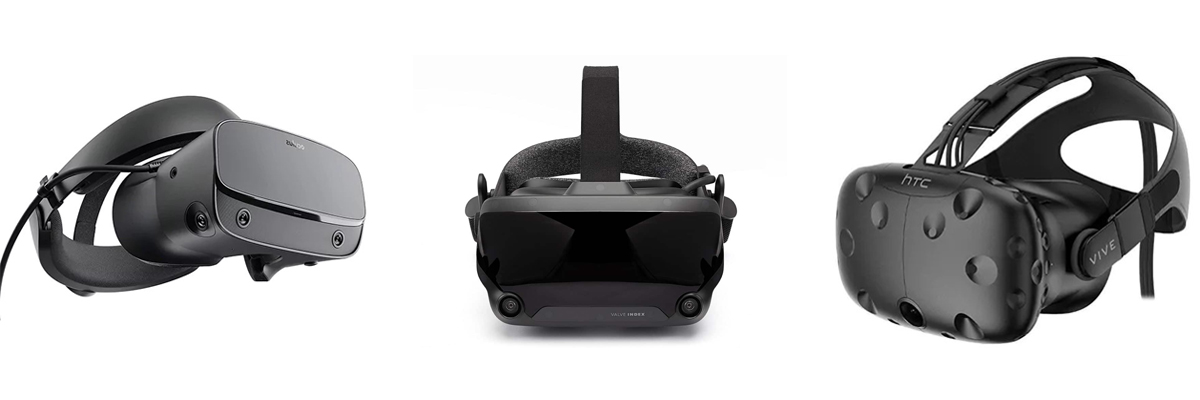
When comparing the Meta Quest series to other VR headsets in the market, several unique features make it stand out.
Standalone VR headsets like Meta Quest and Meta Quest 2 provide an all-in-one VR experience, eliminating the need for an external PC or console. This contrasts with tethered headsets like the HTC Vive, Valve Index, and Oculus Rift S, which require a high-performance PC to run. The standalone nature of the Quest series allows for greater freedom of movement and makes VR more accessible to a broader audience.
In terms of performance, the Quest 2 is comparable to many high-end, PC-tethered headsets. The Qualcomm Snapdragon XR2 platform, combined with a high-resolution display and a 90Hz refresh rate, delivers high-quality visuals and smooth gameplay. This is similar to the performance offered by the PlayStation VR or the HTC Vive Cosmos but without the need for additional hardware.
However, headsets like the Valve Index still offer higher refresh rates (up to 144Hz), a slightly wider field of view, and arguably more precise tracking due to their external tracking stations. Yet, these features come at a significantly higher cost and with the added complexity of setup.
In terms of controllers, the Quest series stands up well against its competitors. The ergonomically designed controllers are intuitive to use and provide haptic feedback for a more immersive experience. Advanced hand-tracking in Quest 2 also allows for controller-free navigation and interaction in some applications, a feature not widely available in other VR headsets.
The Quest series also has the added advantage of versatility. While it functions as a standalone device, it can also be connected to a VR-ready PC via the Oculus Link cable, allowing users to tap into more graphically intensive VR experiences.
For more information, check out our breakdown
of the best VR headsets for development.
How Can You Leverage Meta Quest for Your Business?
The Meta Quest series is an invaluable tool that supports businesses and enterprises in dozens of ways, fostering innovative solutions, training methodologies, and collaborative environments. We have analyzed our previous encounters with Meta Quest and distinguished the main use cases that create value for enterprises.
Training & development
One of the most impactful ways to use Meta Quest in your business is for employee training. Industries such as healthcare, construction, and manufacturing can design immersive, hands-on training simulations that allow employees to learn and practice skills in a safe, controlled environment. This can enhance knowledge retention and reduce the risk and cost associated with real-world training.
Design & prototyping
If your business is involved in product design, architecture, or engineering, the Quest series can revolutionize your design process. By visualizing 3D models in a virtual space, designers can interact with prototypes, identify potential issues early, and accelerate the development cycle. Instead of relying on traditional drawings or physical prototypes, specialists can dive into virtual dimension.
Virtual meetings & collaboration
The Meta Quest can help create virtual collaborative workspaces that transcend geographical boundaries. Teams can engage in immersive, interactive meetings, presentations, and brainstorming sessions, fostering improved communication and team cohesion even if your employees or partners are situated in remote locations or other timezones.
Customer engagement & marketing
Retailers can use VR to provide customers with immersive product demonstrations, virtual store tours, or even travel experiences. This not only enhances customer engagement but can also drive sales by helping customers make informed purchasing decisions. Through VR experiences, businesses can reinvent their marketing activities and expand their customer base.
Support services
Companies offering technical support can use the Meta Quest to provide virtual assistance, allowing support personnel to guide customers through complex procedures or troubleshoot issues in an immersive and intuitive way. It is also possible to automate the support process through the creation of prerecorded VR experiences that will cover the main issues clients face.
To ensure efficient management and deployment of VR solutions, businesses can use the Meta Quest for Business platform, which offers enterprise-level user management, device setup and management tools, and dedicated support. This solution serves as a bridge, bringing the transformative power of VR technology into the business world.
Beyond the use cases we have already described, Meta Quest for Business offers enterprise-grade support and resources, including device setup and management tools, enterprise-level user management, and dedicated support. This ensures seamless integration and operation of VR technology within a business setting.
Explore the VR Capabilities with Program-Ace
We cannot overstate the vast potential of VR technology in transforming business processes, improving operational efficiency, and enhancing the user experience across industries. With the right approach and sufficient funding, healthcare, education, real estate, and construction have a chance to go through a drastic upgrade and reach a new, contemporary operational state and extra efficiency level. However, for businesses to leverage these benefits optimally, it's vital to collaborate with an experienced software development partner.
Program-Ace is an industry-leading custom software development company offering expertise in creating immersive, one-of-a-kind VR solutions for businesses. With an extensive background in developing applications for the Meta Quest series, the team at Program-Ace is well-versed in harnessing the potential of these VR devices to deliver transformative experiences. Feel free to contact us and discuss your project.
